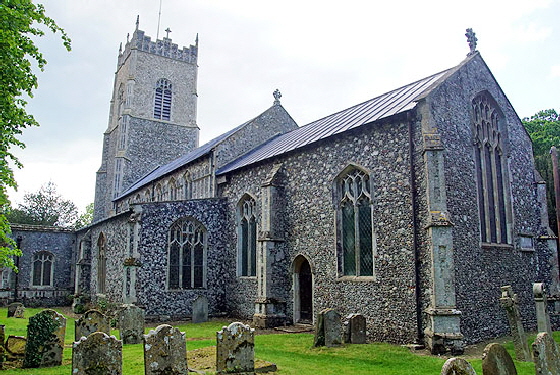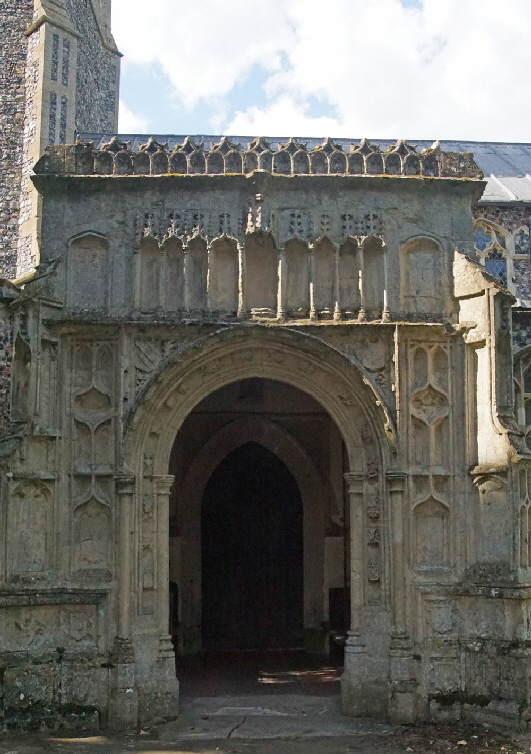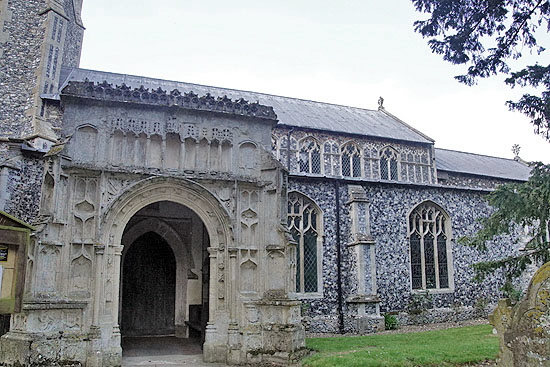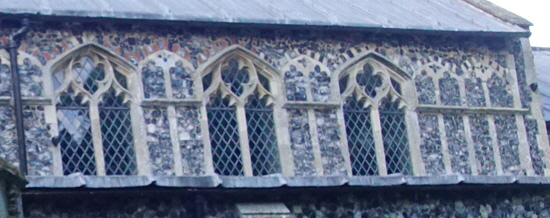|
Alphabetical List |
|
|
|
|
|
|
|
County List and Topics |
|
|
|
Please sign my Guestbook and leave feedback |
|
|
|
the Works of Mercy. The panelled font - of which more anon - is where you would expect to see the Sacraments especially in East Anglia and the Works of Mercy are more usually shown on the walls. So the subject matter here is unusual on benches. Best of them all is a Devil sitting behind a woman with a distinctly lecherous look on his face. This is a Victorian carving, admittedly, but you can also see the damaged mediaeval version. It is a remarkable collection that needs to be enjoyed on its own merits without emoting about “authenticity”. The font is octagonal with panels containing alternately apostles and angels. |
 |
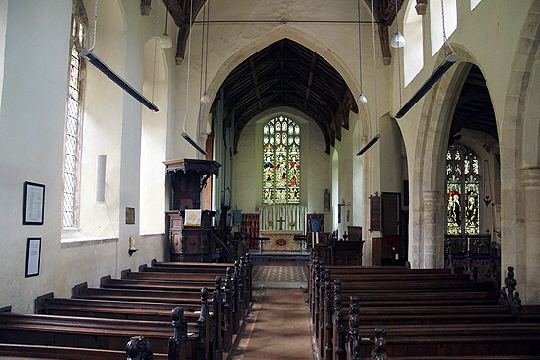 |
||||||||||||
|
Left: The south porch is the most impressive part of the exterior. This is a church that suffered much during Reformation and Commonwealth and the empty niches here are conspicuous. Weathering of the fine detail has taken its own toll. Right: Looking east. It is a “vanilla” church, I suppose. The Jacobean pulpit is a fine one with a “tester” to reflect the pontifications of the preacher away from the ceiling towards the congregation. It is not, as I saw one website speculate - I think facetiously - to stop bat droppings from falling on the minister’s head! Mind you, a good few churches would have cause to be glad of such a device! |
|||||||||||||
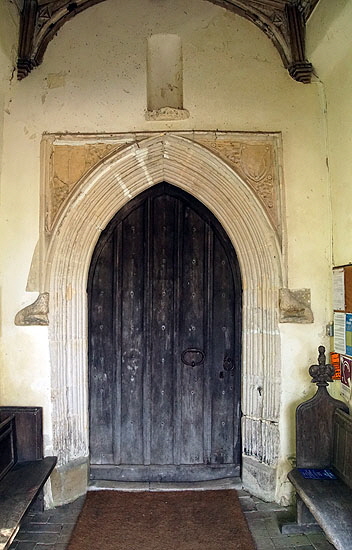 |
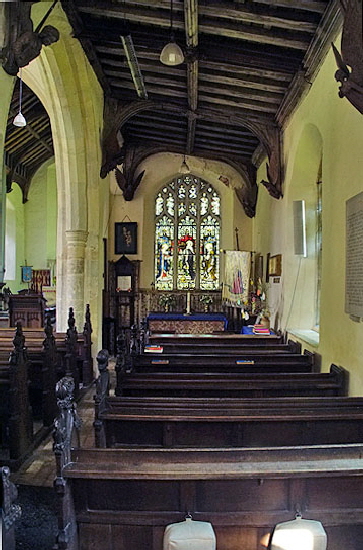 |
||||||||||||
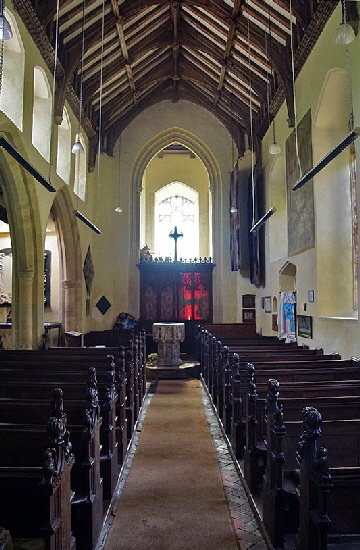 |
|||||||||||||
|
Left: The south doorway shows clear signs of alteration. You can see the remains of an earlier arch to the left of it and a pair of sculptures that look out of place with the rather elegantly carved fifteenth century doorway we see here. Shields are carved within the spandrels of the rectangular composition. Centre: Looking down to the west end. You can see the bench carvings and poppy heads. There is no north aisle. Right: Looking east along the south aisle. Note the large angel carvings on the ceiling. |
|||||||||||||
 |
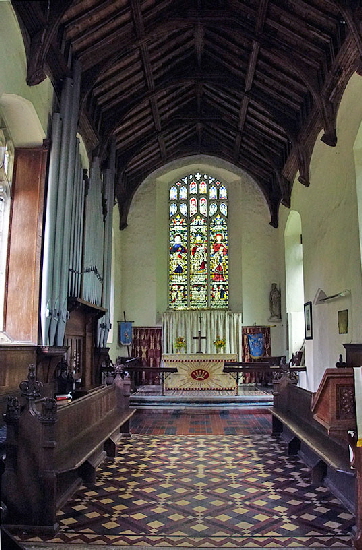 |
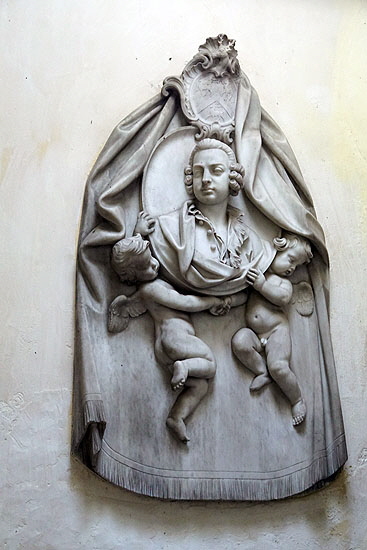 |
|||||||||||
|
Left: In its traditional place opposite the south door are the remains of a St Christopher wall painting. I have seen it suggested that there was originally a north aisle that was subsequently demolished but this suggests otherwise. Centre: The chancel. Right: Part of the Green family monuments at the south west end of the church. This wall plaque is in rococo style - and some might suggest execrable taste! Pevsner said it is “very good work” and wished he knew the author. |
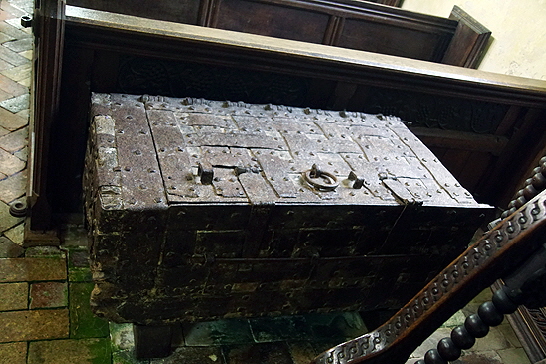 |
||||||||
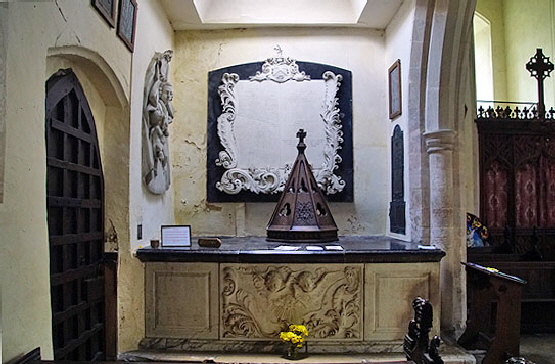 |
||||||||
|
Left: The monument to Thomas, George and Jane Green who does in the 1730s and 40s. Pevsner called it “an oddly confused affair” - which it certainly is. It is made more confusing here by serving as temporary storage for what I presume to be the font cover! Its position is unusual position too, right next to the south door. Right: The parish chest, |
||||||||
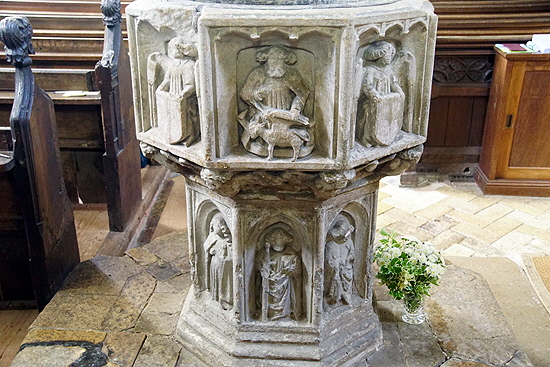 |
 |
|||||||
|
The font. Left: This is a very fine piece of work. Around the bowl are the four evangelists interspersed with shield-bearing angels. In the centre panel here we can see the winged bull of St Luke. On the stem are images of apostles. Like many font it shows more signs of damage that one might expect on such a sacred artefact. Right: I think this must be the eagle of St Mark. |
||||||||
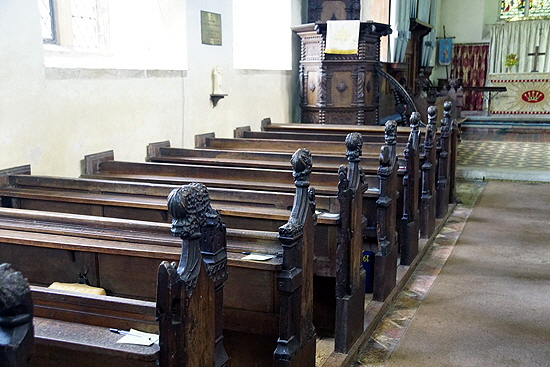 |
 |
|||||||
|
Left: Along the north wall, these bench ends are mediaeval. Right: And in the central block (the right side of the nave) these bench ends are Victorian |
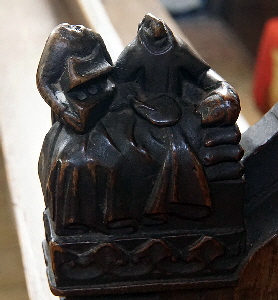 |
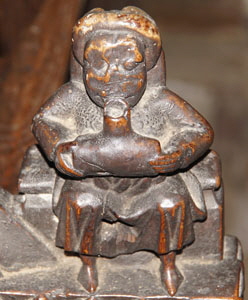 |
 |
|||||||||||||||||||||||||||||||||||||||||||||||
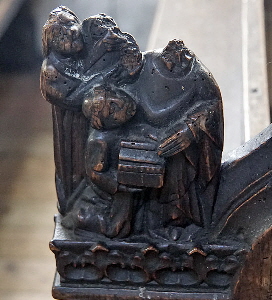 |
|||||||||||||||||||||||||||||||||||||||||||||||||
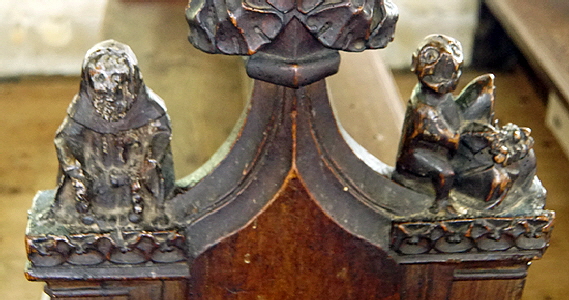 |
|||||||||||||||||||||||||||||||||||||||||||||||||
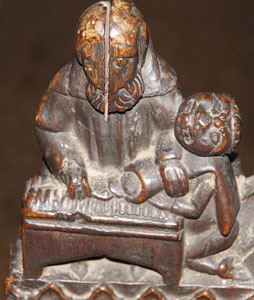 |
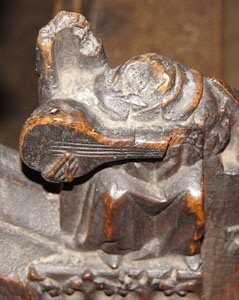 |
||||||||||||||||||||||||||||||||||||||||||||||||
|
Mediaeval Carvings. Some are said to portray the Seven Sacraments and the Seven Virtues but I struggle to identify them, I am afraid. Top left, I am sure, is Extreme Unction - the Sacrament associated with impending death. The head of the sick person is visible. Top right there looks to be a bishop’s mitre on the left hand figure. Possibly a priest is being ordained, another of the sacraments. Upper Second Right may be Gluttony. There are many intriguing mysteries. Not least the fragment of an ape or devil seated behind a rosary-bearing woman. Is it Lust? The scene lower middle I have pored over but still can make nothing of it. |
|||||||||||||||||||||||||||||||||||||||||||||||||
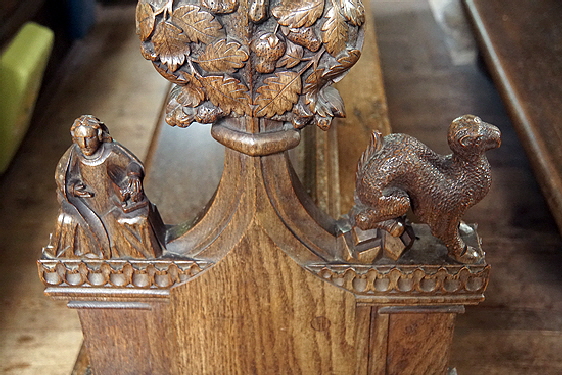 |
 |
||||||||||||||||||||||||||||||||||||||||||||||||
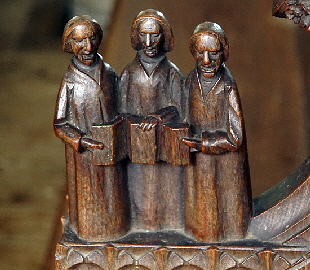 |
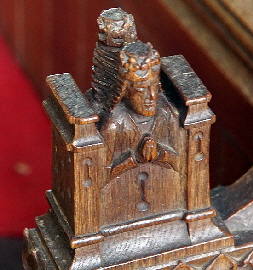 |
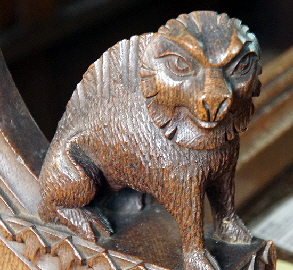 |
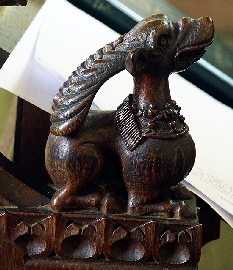 |
||||||||||||||||||||||||||||||||||||||||||||||
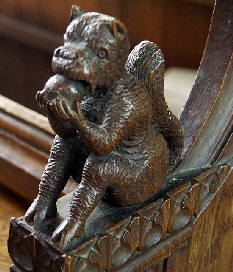 |
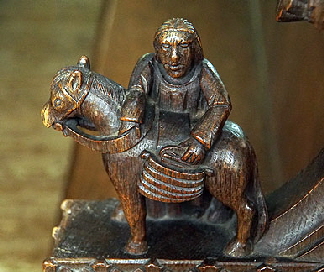 |
 |
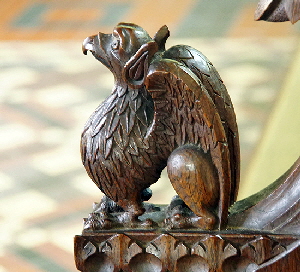 |
||||||||||||||||||||||||||||||||||||||||||||||
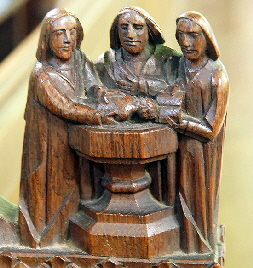 |
 |
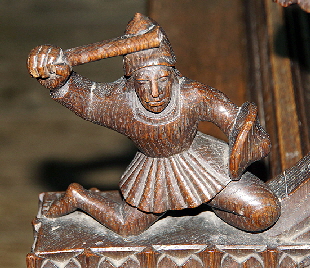 |
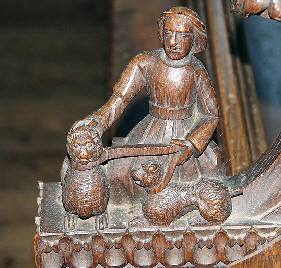 |
||||||||||||||||||||||||||||||||||||||||||||||
 |
 |
||||||||||||||||||||||||||||||||||||||||||||||||
|
And so to the Victorian arm rests. The carver has clearly tried to reproduce the mediaeval designs in many cases. Yet we have such eccentricities as a man wielding a sword and a buckler (small shield); another handling hounds; a very mediaeval looking creature with a long twisted tail; a man with a pack donkey; and what looks rather like a bearded dragon! It is a surprising and fun collection for an era remembered for its sense of propriety. The best things, perhaps, are his reproduction of the devil (or demon) seated behind the rosary-clutching woman (bottom left) and the elephant & castle (bottom right). If you didn’t know immediately that these carvings are relatively modern the fact that the craftsman had clearly seen a real elephant would give the game away! The castle also has a dome . The carpenter has consistently used a rather peculiar form of headdress that looks like an old fashioned sou’wester and which I fear was unknown to mediaeval men and women! |
|||||||||||||||||||||||||||||||||||||||||||||||||
 |
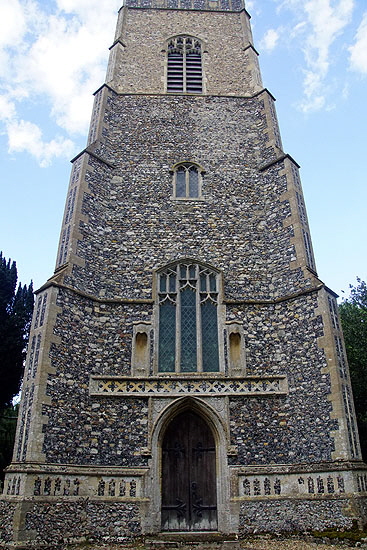 |
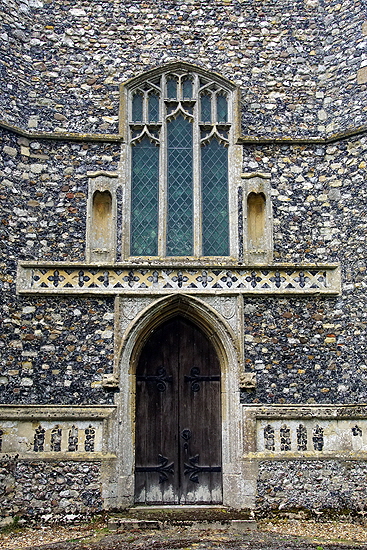 |
|||||||||||||||||||||||||||||||||||||||||||||||
|
Left: The north side which lacks aisle or clerestory. Centre: The west tower. It is a handsome one, as so many are in Suffolk. Note the flush work and empty niche. Right: The west doorway. Note the coats of arms in the doorway spandrels. |
|
|
||||||||||||||||||||||||||||||||||||||||
